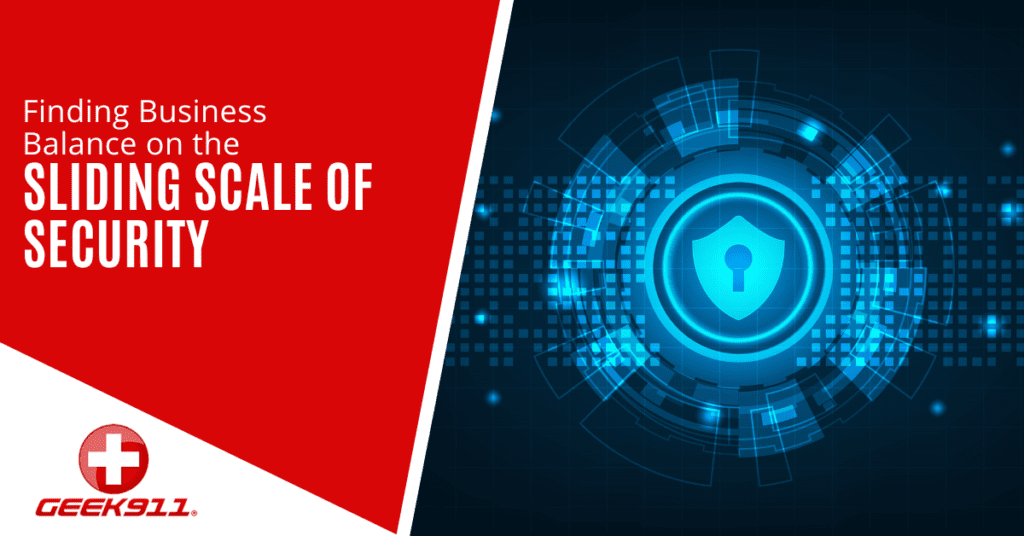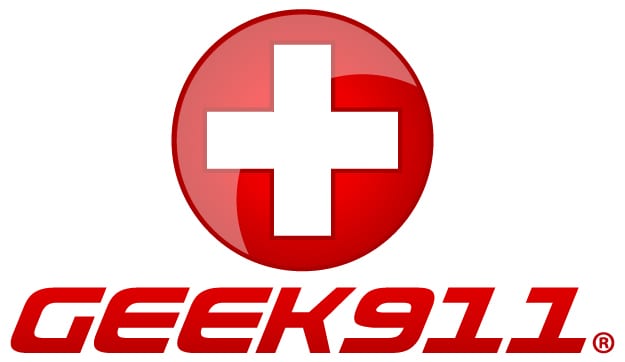Finding Business Balance on the Sliding Scale of Security

Where does your business fit on the cybersecurity scale? Do you use just a basic firewall and spam filter, or have you implemented advanced threat protection, endpoint detection and response, and other best practices?
It can be hard to know what end of the scale you should aim for. Too much security can stifle productivity and innovation (and be expensive). Too little can leave your business vulnerable to cyberattacks.
According to a collective of chief information security officers, 3 in 4 U.S. companies are at risk of a material cyberattack.
Below, we’ll explore how businesses can find the right balance on the sliding scale of security.
Understanding the Sliding Scale of Security
The sliding scale of security refers to the spectrum of security measures that a business can implement, ranging from minimal protection to highly stringent controls.
On one end of the scale, businesses have basic security measures that might include antivirus software and simple firewalls. On the other end, organizations implement advanced security protocols such as multi-factor authentication, encryption, and continuous monitoring.
Finding the right balance involves understanding the unique needs of your business and assessing the potential risks. Here are some key factors to consider.
1. Business Size and Industry
The size of your business and the industry you operate in significantly impact your security needs. Small businesses might not have the same level of sensitive data as large enterprises, but they are still attractive targets for cybercriminals.
Industries like healthcare, finance, and legal services deal with highly sensitive information and are subject to strict regulatory requirements. These sectors require more robust security measures to comply with regulations and protect sensitive data.
2. Data Sensitivity
The type of data your business handles is a crucial factor in determining your security needs. Personally identifiable information (PII), financial data, and proprietary information require higher levels of protection.
3. Regulatory Requirements
Regulatory compliance is a critical aspect of business security. Regulations such as GDPR, HIPAA, and PCI-DSS have specific requirements for data protection and privacy. Non-compliance can result in hefty fines and damage to your business reputation.
4. Business Operations
Your business operations and processes also influence your security posture. For instance, if your employees frequently work remotely or use personal devices for work, you need to implement security measures that address these scenarios.
Remote work increases the attack surface, and personal devices might not have the same level of security as company-provided equipment.
Implementing a Balanced Security Strategy
Once you’ve assessed your business needs and potential risks, the next step is to implement a balanced security strategy. Here are some best practices to help you find the right balance.
1. Risk Assessment
Conduct a thorough risk assessment to identify potential threats and vulnerabilities. This process involves evaluating your IT infrastructure, data, and business processes.
A risk assessment helps you understand where your security gaps are and prioritize areas that need immediate attention.
2. Layered Security Approach
Adopt a layered security approach, also known as defense-in-depth. This strategy involves implementing multiple security measures at different levels to create a comprehensive security posture.
For example, combining firewalls, antivirus software, encryption, and access controls can provide robust protection against various threats. Each layer acts as a barrier, making it more difficult for attackers to penetrate your defenses.
3. Employee Training
Human error is one of the leading causes of security breaches. Regularly train your employees on security best practices, such as recognizing phishing attempts, creating strong passwords, and following company policies. A well-informed workforce is your first line of defense against cyber threats.
4. Access Controls
Implement strict access controls to ensure that only authorized personnel can access sensitive data and systems. Use role-based access controls (RBAC) to assign permissions based on job roles and responsibilities. Multi-factor authentication (MFA) adds an extra layer of security by requiring users to verify their identity through multiple methods.
5. Data Encryption
Encrypt sensitive data both in transit and at rest. Encryption ensures that even if data is intercepted or accessed by unauthorized individuals, it remains unreadable and useless. Implementing encryption for emails, files, and databases adds a critical layer of protection for your most valuable information.
6. Incident Response Plan
Develop and maintain an incident response plan to quickly and effectively respond to security incidents. An incident response plan outlines the steps to take when a breach occurs, including containment, investigation, and recovery.
Having a well-defined plan minimizes the impact of a breach and helps maintain business continuity.
7. Regular Updates and Patching
Keep your software, systems, and devices up to date with the latest security patches and updates. Cybercriminals often exploit vulnerabilities in outdated software to gain access to networks. Regular patching and updates close these security gaps. Automating the update process can help ensure that no critical updates are missed.
Balancing Security and Business Functionality
While robust security measures are essential, it’s crucial to balance them with business functionality. Here are some tips to achieve this balance:
- Involve Stakeholders: Involve key stakeholders, including IT, management, and employees, in the decision-making process.
- User-Friendly Solutions: Choose security solutions that are user-friendly and integrate seamlessly with your existing workflows.
- Regular Reviews: Regularly review and adjust your security measures to ensure they remain aligned with your business objectives.
- Leverage Technology: Leverage advanced technologies such as artificial intelligence (AI) and machine learning (ML) to enhance your security posture.
Get a Security Strategy That Fits Like a Glove
GEEK911 can customize a security strategy for your Silicon Valley area business. We’ll ensure that you’re fully protected, while also keeping cost and productivity in mind.
Contact us today to schedule a consultation. Call 866-433-5411 or reach us online.
